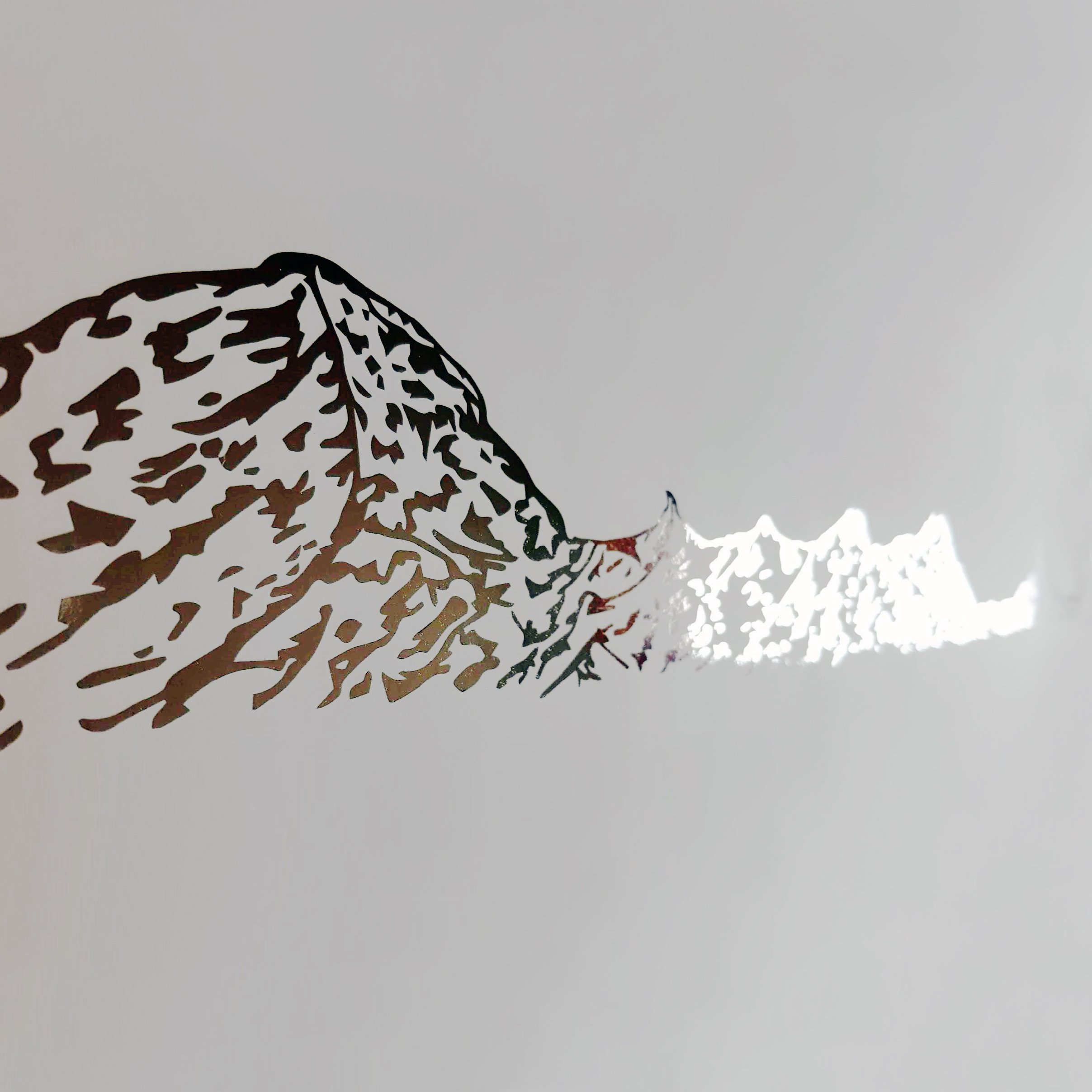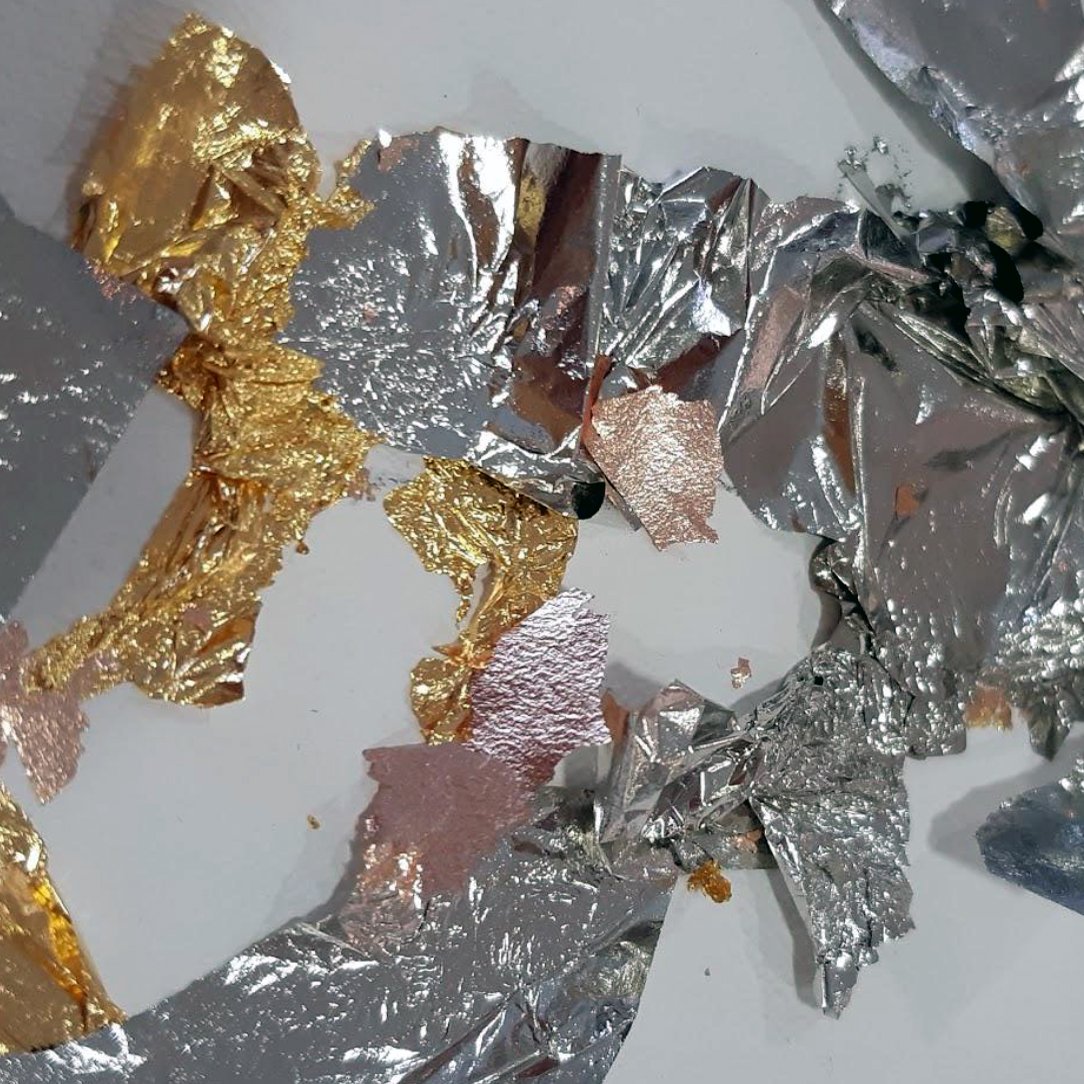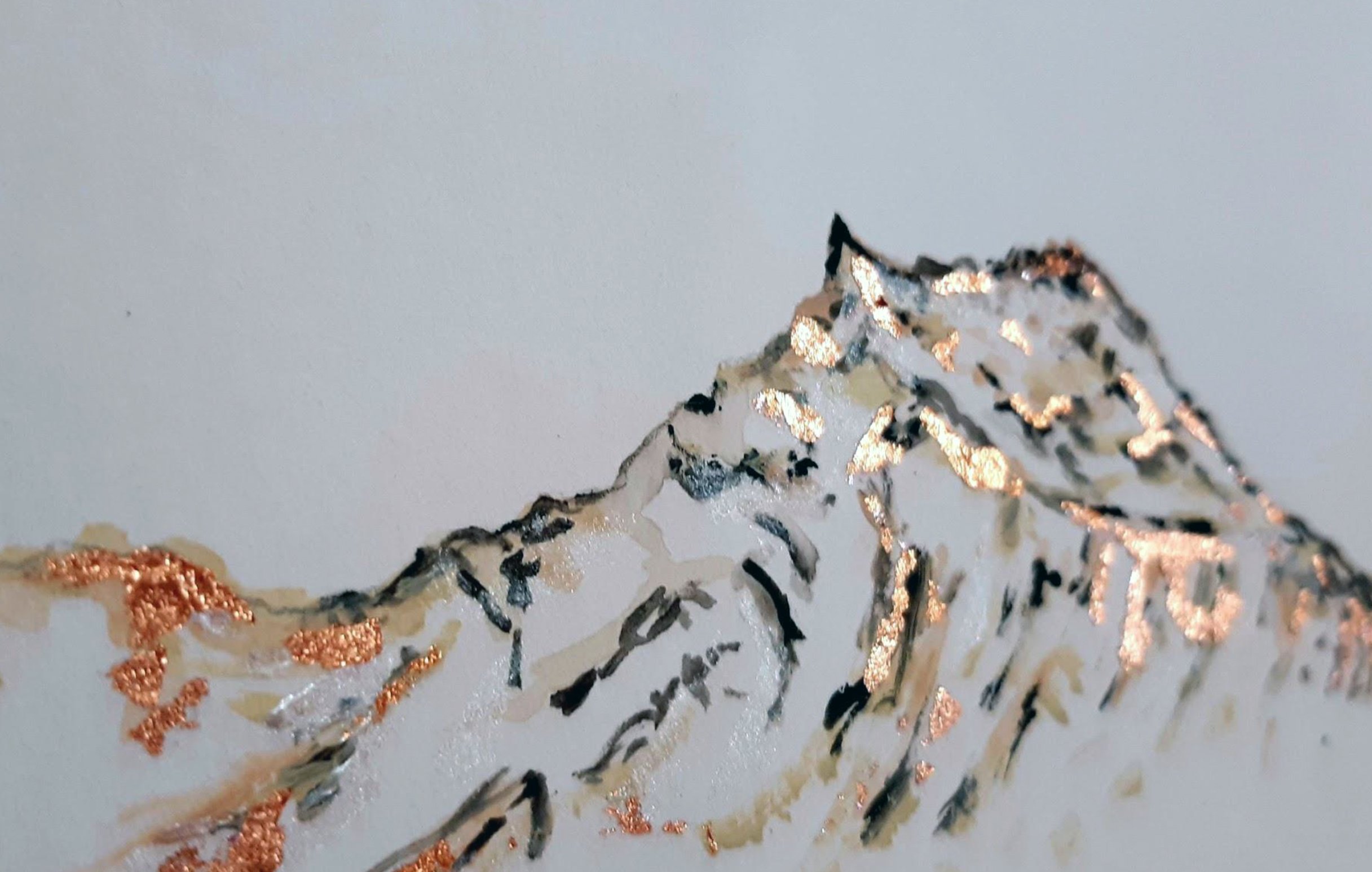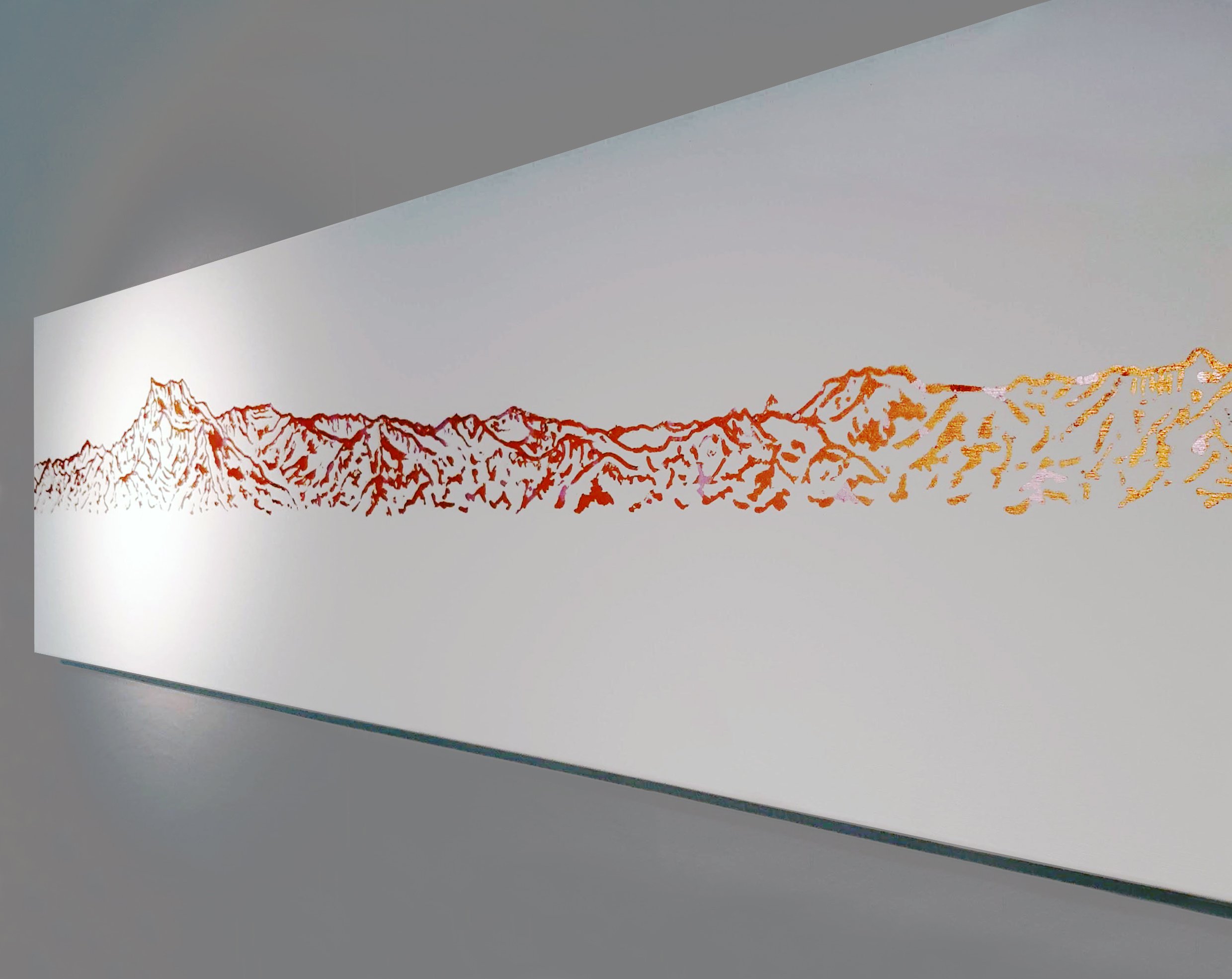Created after 2003 after finishing University
Your work plays with visual texture and negative space but also incorporates patterns in a major way. Do you have a design background?
When I was at college studying Art Foundation my teacher suggested a course in Design surface pattern at Staffordshire University. I was offered an interview and once the course leader saw my portfolio offered me a place there and then. I had a good feeling about the course and accepted.
Whilst there I gained a lot of knowledge on design for repeat patterns composition, colourways that would be used within the industry for wallcoverings and fabrics. I spent my time trying to find a distinctive style which would stand out amongst the other students.
You’ve certainly developed a very recognizable style. Which artists influenced you over your career?
From a young age I was exposed to some of the great artists of Monet, Warhol, Litchenstein, Miro and Bridget Riley. I remember visiting Claude Monet’s house in Giverny just outside Paris when I was a young teenager and also visiting the Pompidou centre in Paris. Designers Tricia Guild, Nina Campbell, and Terence Conran also greatly influenced my early work.
How did you manage the transition from design to the art realm?
I think the two have overlapped over the years and my design knowledge, has influenced my work later in my career. I have never practised as a professional designer, in fact after University, I trained in personal training and sports massage alongside practising as an artist. My art journey has definitely changed over the past 20 years.
The ability to take my artwork and use programs like Adobe Photoshop and Illustrator has given me flexibility in creating design work from my original artwork. I have some of my early works safely stored away probably never again to see the light of day. Some of my older works make me cringe but it’s all been part of the process.
You create elegantly pared down compositions that literally shine. What first attracted you to working with metallics?
I have always liked the way the light catches the metal and changes as you move around the piece. I work with various loose metal leaf. I started with aluminium leaf in my 20’s, but then I didn’t use it in my art for 15 years until I arrived in Switzerland and started introducing it back into my mountain landscapes.
Limited edition print created using the hot foil technique
Many of your pieces employ a high-contrast style with small, distinct shapes and linework on stark white backgrounds. How did you develop this unmistakable approach?
When I first arrived in Switzerland in 2010 I was unable to work. We arrived in mid winter and the mountains were covered in snow. I spent my days exploring the mountains on skis and on foot gaining inspiration from the landscape. I painted over some old paintings that I had bought from the UK and I started painting the mountains in black and white on white canvas. I loved the contrast the mountains had against the white background.
Detail abounds in each of your pieces. Are these details derived from imagination, photos, or from life?
I love to be out in the mountains, it is my happy place. I take the inspiration back to my studio as I work with loose metal leaf. Wind is not my friend so most of my work is produced from my studio. The Dents du Midi dominates our landscape, but the composition of the full mountain range from Villars has led me to focus on producing full panoramic pieces incorporating long panoramas up to 250cm, which includes the Dents du midi.
What are you currently work on in your atelier?
I am creating a new body of work using paper cuts continuing with my mountain theme. Also, as an artist I think I have discovered my ‘self portrait’. I have always wondered how this will turn out, and it is something that will be revealed in 2022.
You were exploring metallic treatments on glass. Do you think you’ll develop a new series from that investigation?
I produced the glass for my kitchen using silver leaf. I would like to continue my work using the verre églomisé technique. I am always thinking about my next project. Yes, there may be some new projects on the horizon!
Silver leaf applied to glass for a kitchen wall












